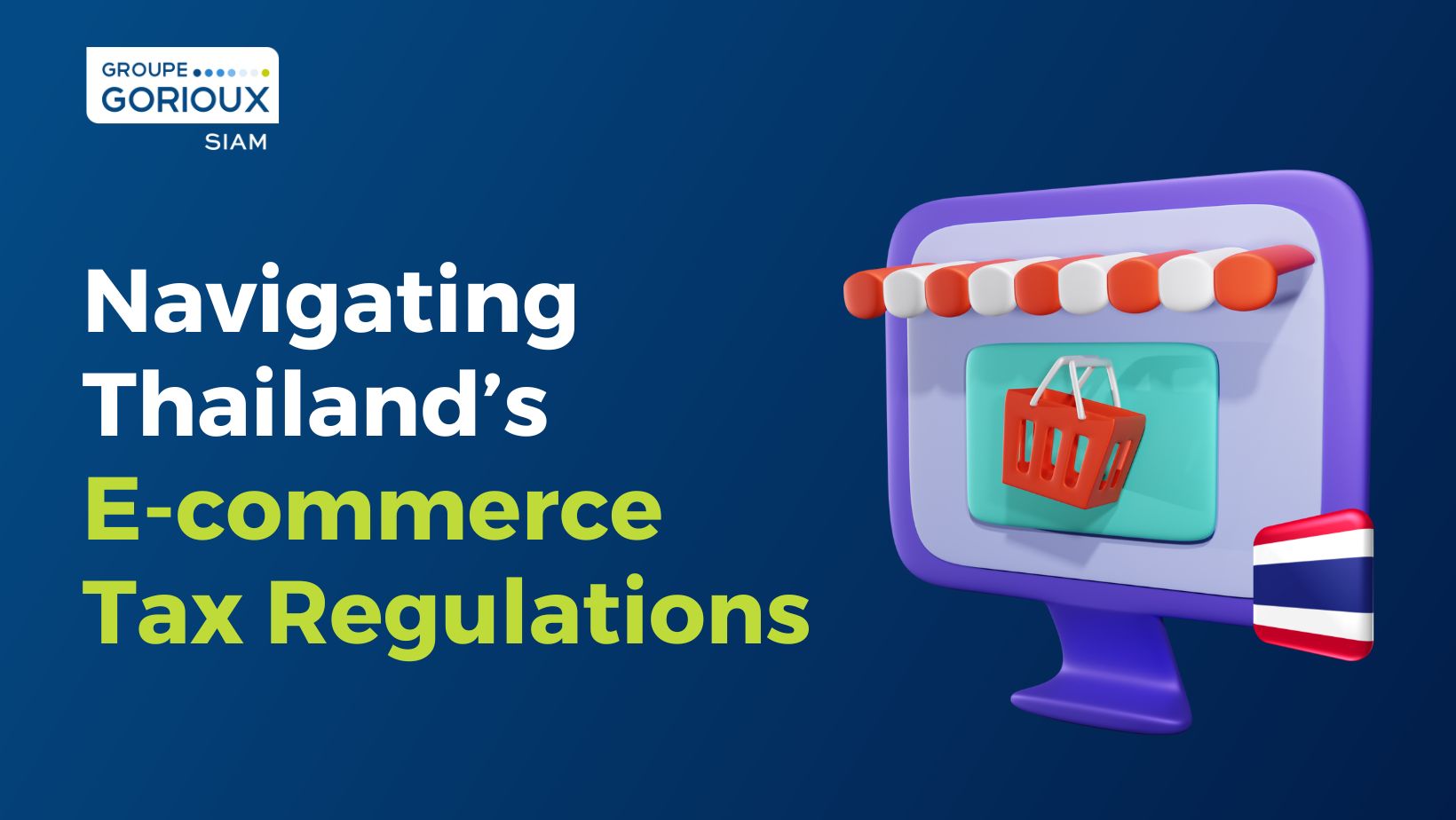During the past few years, Thailand has considerably increased its e-commerce presence and consumption. As a matter of fact, Thailand has, in 2024, approximately 43.5 millions e-commerce users, which represents approximately 60% of its population. In terms of value, Thailand represents the second largest e-commerce market in South East Asia, just after Indonesia, with over 980 billions baht (USD 28 billion) according to the chief executive of Priceza and honorary president of the Thailand E-Commerce Association, Thanawat Malabuppha.
Considering the rise of e-commerce on the Thai market, it is important to understand both its functioning, its tax regulations and its challenges to be able to address this evergrowing market in the best possible way.
f

E-Commerce Key Players and Market Dynamics
To fully understand a market you first need to understand its key players. For the Thai e-commerce market, 2 key players stand out compared to their competitors : Lazada & Shopee.
On the one hand, Lazada, backed by Alibaba, has a strong historical presence in Thailand as it was one of the first platforms to successfully implement itself in Thailand. On the other hand, Shopee would appear as the strong and trendy “newcomer” that became very popular while others were already set.
d

Their common attributes are a wide range of products and an optimal customer experience. These factors now set the market standard. At first, the main products bought through e-commerce in Thailand were clothing and fashion accessories. Over the years, other product categories like personal and household care, technology, and food and beverages have grown. This growth aligns with the wide product range offered by Lazada and Shopee, which explains part of their success.
E-commerce in Thailand is evolving quickly in terms of value and users. We can expect it to include any product category. The next step to fully understand this market is to know its rules, regulations, and taxes. These form the framework for any exchange of goods and services in this market.
d

Thailand e-commerce framework (VAT & cross-border transactions)
In order to regulate e-commerce transactions, both domestic and international actors are subjected to local tax laws. The usual VAT rate is 7% for any business whose annual revenues exceed 1.8 million baht (approximately USD 50,000). Those businesses then have to register for VAT and return it to the Thai Revenue Department. In addition, cross-border business transactions are subject both to VAT and to customs duties. Those foreign products VAT is based on the custom value (cost, insurance and freight combined).
This ensures fair competition between local and imported goods. The Thai Government also ensures that digital services from outside the country are subjected to VAT if consumed within Thailand. These measures help the e-commerce market evolve fairly for all parties involved. Now that the framework is set, you should understand the challenges it implies.
d
f

Thailand e-commerce challenges & solution
E-commerce has become crucial in Thailand, bringing many challenges to companies’ attention. First, taxes and regulations set by the government can impact profitability, especially for SMEs, which may lack resources.
Another challenge is the lack of infrastructure and logistics in some rural areas. As the country is still developing, some regions may face delays or increased costs.
A final challenge is fierce competition. The Thai e-commerce market is dominated by Shopee and Lazada. These giants are less affected by these challenges due to their size and resources. It is important to find ways to overcome these challenges and compete with them.
To reduce costs and solve various issues in e-commerce, some of our clients sell through Amazon. This provides them with the infrastructure and resources of a bigger player.
To put it in a nutshell, Thailand’s e-commerce market has 2 major players (Shopee & Lazada) which offer a wide range of products and a clear framework including regulations and taxes that rule the market. Alongside this information, we identified 3 main challenges to overcome (profitability due to the strict framework, lack of infrastructures and logistics as well as the fierce competition). However, at Gorioux Siam a solution has prevailed, selling through Amazon.
This solution enables even small players to overcome those challenges in the best possible way. Contact us to benefit our expertise and experience, for your company to successfully get into the Thai e-commerce market.



